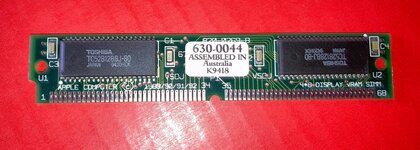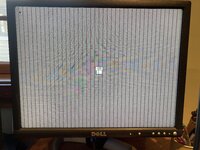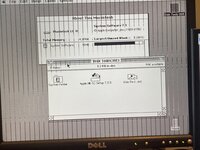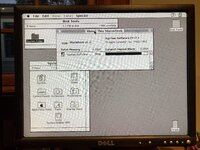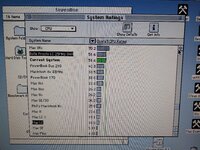bigmessowires
Well-known member
My next victim is a Macintosh LCII logic board. The seller said it played chimes of death at power-up, possibly due to missing VRAM, and needed to be recapped. The board looks pretty clean, so I was surprised when during recapping I nudged one of the ICs and it fell off the motherboard (see the circled chip in the photo). I cleaned up the pad and resoldered the chip, and finished recapping. I added a VRAM SIMM stolen from a 475, and I'm using a working power supply from that same 475. It does not have any RAM besides what's soldered on the motherboard.
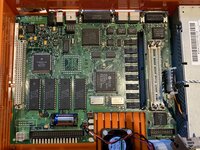
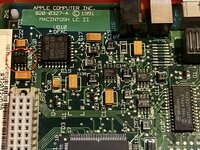
When powered-on, this LCII shows a solid gray screen and plays chimes of death after a few seconds. There is no startup chime - it goes directly to chimes of death. After the ascending death chime, there's a second chime of four more notes - is this an error code? I haven't encountered this before.
I'm thinking maybe the RAM is bad? Or the VRAM SIMM that I stole from the 475 isn't compatible?


When powered-on, this LCII shows a solid gray screen and plays chimes of death after a few seconds. There is no startup chime - it goes directly to chimes of death. After the ascending death chime, there's a second chime of four more notes - is this an error code? I haven't encountered this before.
I'm thinking maybe the RAM is bad? Or the VRAM SIMM that I stole from the 475 isn't compatible?

